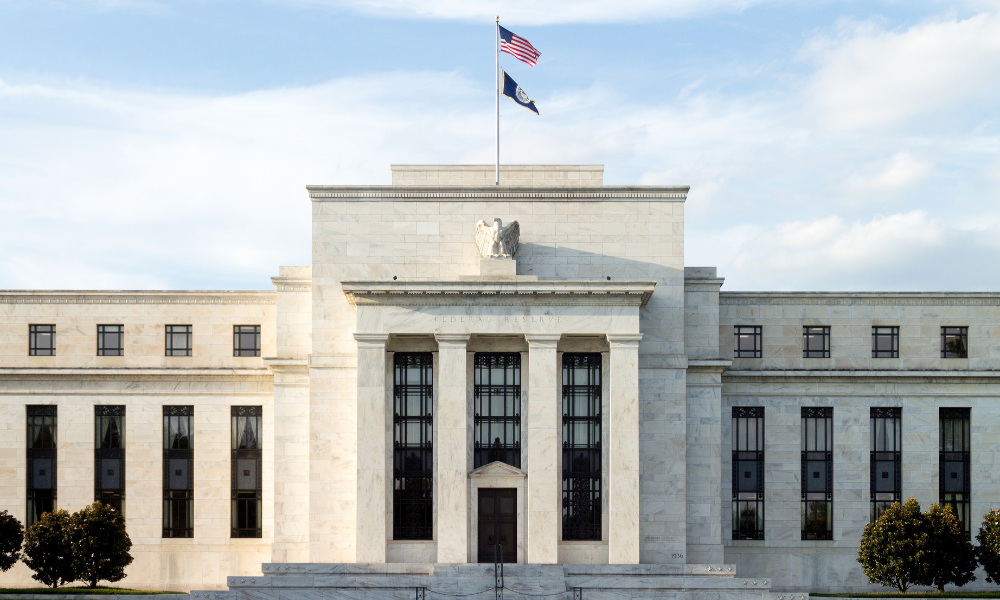The central bank may act more aggressively than originally expected after Trump's bombshell tariff announcement

Expectations for a flurry of Federal Reserve interest rate cuts this year spiked as financial markets reeled in the wake of President Trump’s wave of global tariffs.
The central bank is now expected by money markets to slash its key rate by 100 basis points before the end of the year, probably in four 25-point reductions, after trillions of dollars were wiped from US equities and bond yields plunged in the days following Trump’s announcement.
The president said markets would “boom” under the new tariff regime, which saw the US slap import tariffs of at least 10% worldwide on Wednesday – and promises of sharp retaliation from trading partners including Canada.
The S&P 500 Index suffered its worst day since early 2020 on Thursday, while recession fears gathered pace amid a bloodbath across markets including the Dow and Nasdaq, both of which nosedived yesterday.
The Fed left rates unchanged in its last announcement on March 19, keeping its benchmark rate at a range of 4.25% to 4.50%, with chair Jerome Powell emphasizing that the central bank was weighing up the likely impact of Trump’s policies before making a move.
Its so-called “dot plot”, which maps decisionmakers’ expectations on the direction of interest rates, suggested just two cuts were likely in 2025. But markets now believe the Fed will be forced to trim rates more than originally planned as an economic downturn potentially looms.
That leaves an unclear outlook for the mortgage market. Ten-year yields fell below 4% on Friday morning, hitting their lowest level since early January and dipping to 3.95%.
Trump welcomed that slide on Thursday, but wider economic uncertainty – and the prospect of a spike in consumer prices and unemployment in the event of a damaging trade war – could weigh against homebuying activity.
At the beginning of the week, Goldman Sachs said it was raising its expectations for a US recession to 35%, marking the highest chance of a downturn since the collapse of Silicon Valley Bank and Signature Bank two years ago.
A recession is growing more likely, Goldman analysts said, partly because household and business confidence is on the wane – and also due to “statements from White House officials indicating greater willingness to tolerate near-term economic weakness in pursuit of these policies.”
Stay updated with the freshest mortgage news. Get exclusive interviews, breaking news, and industry events in your inbox, and always be the first to know by subscribing to our FREE daily newsletter.



